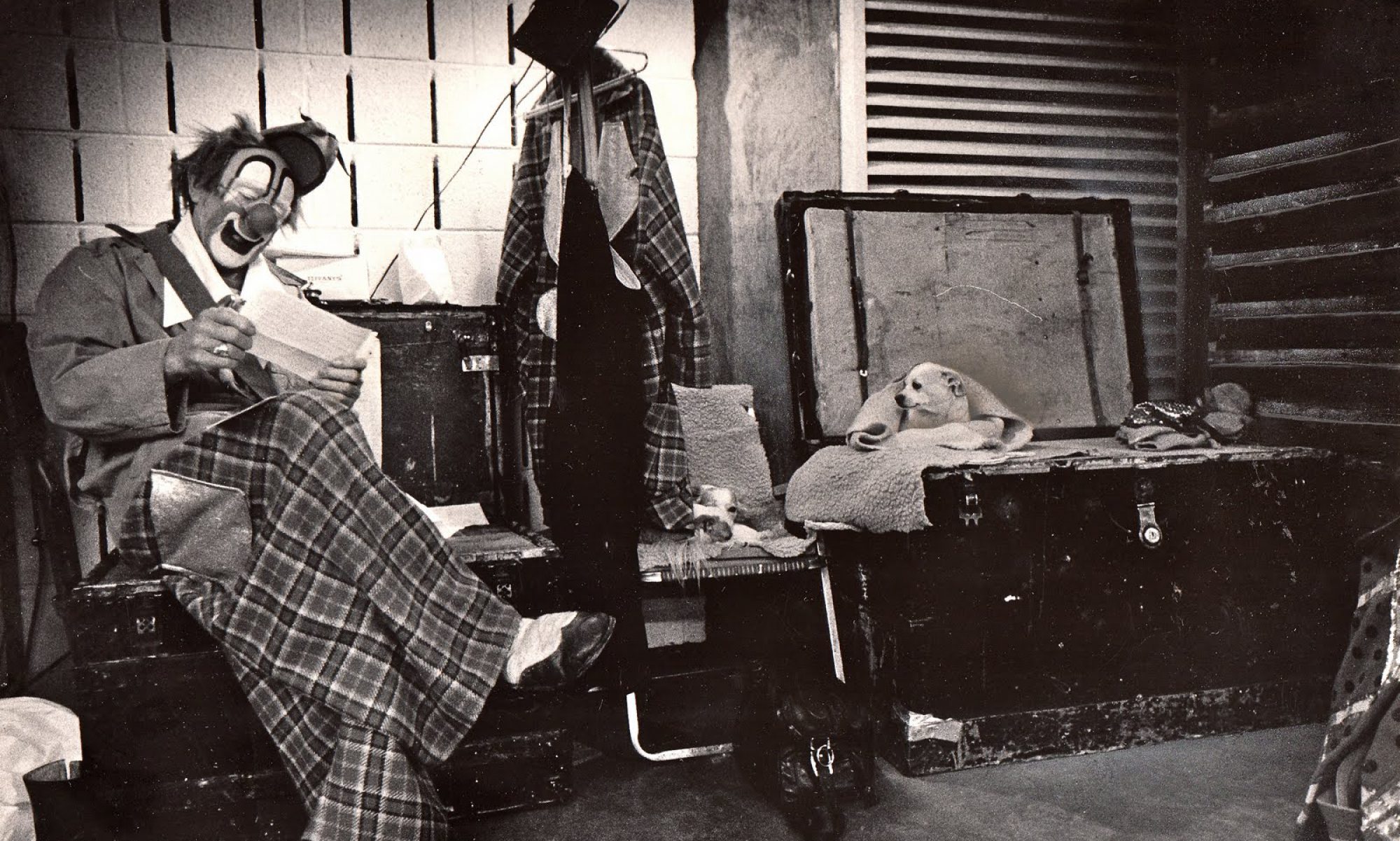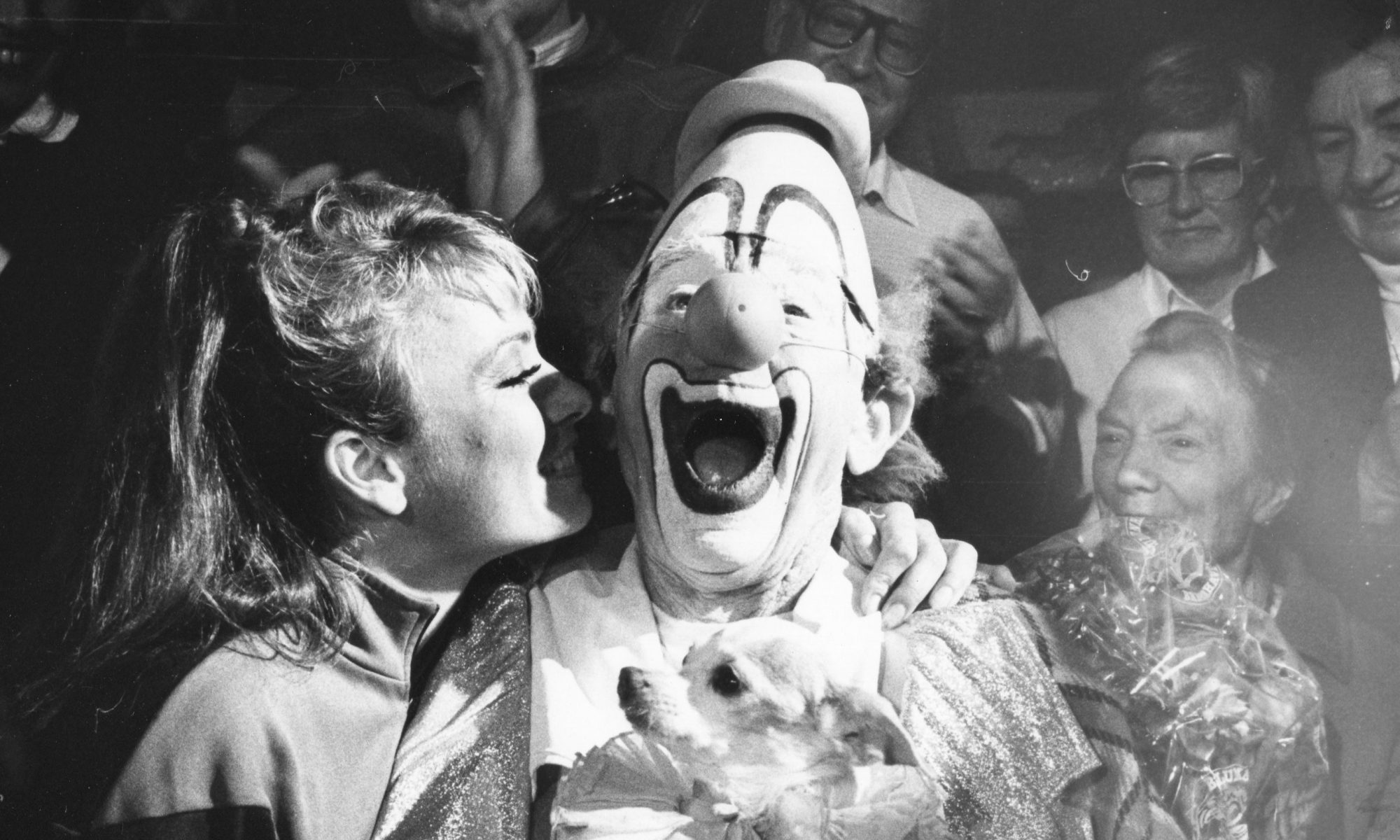Lou Jacobs came to be known as one of the most famous clowns in the world through his innovative comic routines, compassion for others, and strong dedication to his work. He truly earned his status as a legend among clowns with his constant contributions to the clown community and friendly demeanor. Lou spent more than 60 years in the clowning community and continued to be a strong presence after his retirement. Through laughter and strong character he taught major life lessons of compassion, love, and kindness.
Born Ludwig Jacob in Bremerhaven, Germany in 1903, Lou had an early start in show business. At the age of seven, he played the back end of an alligator to his older brother’s forefeet and jaws. Twisted into this awkward position, he soon realized that he was a natural contortionist and comedian. In 1923, he immigrated to America and changed his name to Lou Jacobs. He found work as a tumbler entertaining at fairs, outdoor exhibits, and vaudeville shows in New York City. Two years later, he joined Ringling Bros and Barnum & Bailey Circus where he eventually came to became known as the most famous clown in the world.
Funny Business
Always a creative thinker, Lou made the most of his own gags, many of which became Ringling Bros. and Barnum & Bailey Circus classics. Some of these included whizzing around the hippodrome on water skis and zooming past spectators in a motorized bathtub. His most famous clown gag would be the fully functional red and white midget car. It was only two feet by three feet, and Lou was 6’1″, but somehow, he managed to drive it under the big top and then pop out with ease. Lou used the skills he learned as young tumbler and contortionist.
Another classic gag included Jacobs feisty chihuahua, Knucklehead. The small dog played the part of a mischievous rabbit always eluding the Big Game Hunter (Lou Jacobs) only to play dead when he was finally “shot.” After Lou moaned with sorrow, Knucklehead would sit back up, and the pair would joyfully reunite. This partnership lasted 14 years, and Knucklehead was a loyal friend and an enthusiastic participant is all of Lou’s shenanigans.
His gags did not stop in the circus tent and he often reached out to the community doing shows outside the Ringling Bros. & Barnum and Bailey Circus. He knew the healing power of laugher, and in 1948 performed for 37 children who survived Nazi concentration camps. During his act he walked around the ring with an oversized bird cage containing a shoe that sang like a canary. The children, who had not experienced much happiness in their lives, enjoyed a moment of joy and laugher.
He entered mainstream American life in 1952 he when had a cameo role in the Hollywood film The Greatest Show on Earth, starring Jimmy Stewart. Then, in 1966 Lou’s happy face could be seen on a U.S postage stamp. His private life was also blooming, and in 1953 Lou married Jean Rockwell, a former model and aerialist with Ringling Bros. and Barnum & Bailey.
Life After the Big Top
In the early 1970s Lou left the circus and became one of the founding professors of Ringling Bros. and Barnum & Bailey Clown College. He passed on his wisdom and beliefs to future clowns, and the students came to love him just as the public did. He taught Master Clown classes until 1991. Despite his failing health, Lou’s spirits were still as high as ever, and he always maintained the cheerful attitude that won the hearts of all his fans. This legend among clowns had many achievements in his career as an entertainer. He was a well loved performer for more than 60 years. During this time he attained the prestigious Master Clown title. The last decade of his life was a flood of awards and recognition, starting in 1987 when he received the Ringling Bros and Barnum & Bailey Circus Lifetime Achievement Award. A year later his star was unveiled in Sarasota’s Circus Ring of Fame. And, in 1989, Lou was inducted into the Circus Hall of Fame in Peru, Indiana, and the Clown Hall of Fame in Delavan, Wisconsin. He was also honored at the International Circus Festival of Monte Carlo.
Lou Jacobs was much more than a circus clown. He lived a life that touched and enlightened his audiences. He is a symbol of what clowning is in the purest sense, always keeping with the belief in the value of laughter and kindness. He is not forgotten by the clowning community or the public, and his gags are still used to create laughter for the next generation of circus goers.

